I had barely stepped across the threshold and I already felt claustrophobic. I could see Nola lying in a bed to my right. She was about ten years old, I guessed. This was her bedroom. I had come knowing what to expect, but somehow I still wasn’t prepared. Five people and one dog had just walked into the room, but she didn’t have so much as a flicker of acknowledgment for any of us. She just lay perfectly still, her eyes closed, apparently peaceful.
“She’s been like this for over a year and a half,” Dr Olssen said as she bent to stroke Nola gently on the cheek.
I was in Horndal, Sweden — a small municipality 100 miles north of Stockholm. Dr Olssen had been caring for Nola since she had first fallen ill, so she knew the family well. She drew the curtains aside to let the light in, then turned to Nola’s parents and said: “The girls have to know it’s daytime. They need sun on their skin.”
“They know it’s day,” her mother answered defensively. “We sit them outside in the morning. They’re in bed because you’re visiting.”
This wasn’t just Nola’s room. Her sister, Helan, who was roughly a year older, lay quietly on the bottom of a set of bunk beds to my left.
I was there because I was a neurologist, a specialist in brain disease and someone who is familiar with the power of the mind over the body — more than most doctors, perhaps.
I approached Nola’s bed. As I did, I glanced over my shoulder at Helan, and was surprised to see her eyes open for a second to look at me and then close again.
“She’s awake,” I said to Dr Olssen.
“Yes, Helan’s only in the early stages.”
Nola showed no sign of being awake, lying on top of her bed covers, laid out in preparation for me. She was wearing a pink dress and black-and-white harlequin tights. Her hair was thick and glossy, but her skin was pale. Her lips were an insipid pink, almost colourless. Her hands were folded across her stomach.
She looked serene, like the princess who had eaten the poisoned apple. The only certain sign of illness was a nasogastric feeding tube threaded through her nose, secured to her cheek with tape. The only sign of life, the gentle up and down of her chest.
She looked serene, like the princess who had eaten the poisoned apple.
Nola and Helan are two of the hundreds of sleeping children who have appeared sporadically in Sweden over a span of 20 years. Rumour suggested the phenomenon had been around since the 1990s, but the number of children affected escalated at the turn of the century. Between 2003 and 2005, 424 cases were reported. There have been hundreds more since. It affects both boys and girls, but with a slight preponderance of girls.
Typically, the sleeping sickness had an insidious onset. Children initially became anxious and depressed. Their behaviour changed: they stopped playing with other children and, over time, stopped playing altogether. They slowly withdrew into themselves, and soon they couldn’t go to school. They spoke less and less, until they didn’t speak at all. Eventually they took to bed. If they entered the deepest stage, they could no longer eat or open their eyes. They became completely immobile, showing no response to encouragement from family or friends, and no longer acknowledging pain or hunger or discomfort.
They spoke less and less, until they didn’t speak at all. Eventually they took to bed.
The first children affected were admitted to hospital. They underwent extensive medical investigations, including CT scans, blood tests, EEGs (electroencephalograms, or brain-wave recordings) and lumbar punctures to look at spinal fluid. The results invariably came back as normal, with the brain-wave recordings contradicting the children’s apparent unconscious state. Even when the children appeared to be deeply unresponsive, their brain waves showed the cycles of waking and sleep that one would expect in a healthy person.
Ultimately, being in hospital didn’t make much difference, so many children were sent home to be cared for by their parents. The children’s ages ranged from 7 to 19. The lucky ones were sick for a few months, but many didn’t wake for years. Some still haven’t woken.
When this started happening, it was unprecedented. Nobody knew what to call it. In the end, Swedish doctors settled for “apathy”. That description fitted with what the doctors were seeing. After a few years, apathy was converted to an official medical designation — Uppgivenhetssyndrom — literally meaning “to give up”. In English, this became resignation syndrome.
Dr Olssen rolled up Nola’s dress, exposing her bare stomach and revealing that she was wearing a nappy under her tights. Nola didn’t resist the intrusion. Dr Olssen pressed on her stomach and listened to it with a stethoscope, then listened to her heart and lungs. “Her heart rate is 92. High.”
Ninety-two did not sound like the heart rate that goes with an absence of emotion, in a child who had not moved for over a year. It suggested a state of emotional arousal — the very opposite of apathy.
Dr Olssen rolled up Nola’s sleeve and tested her blood pressure. The child didn’t flinch. “One hundred over seventy-one,” she told me, which is normal for a relaxed child. She lifted Nola’s arm to show me how limp it was. The arm dropped unceremoniously onto the bed when she let it go.
Dr Olssen was a retired ear, nose and throat doctor, desperate to help the children and support the families. She hoped that as a neurologist, I could find an explanation for what had so far been inexplicable; that I would interpret the clinical signs and, by doing so, legitimise the girls’ suffering and convince someone to help them. That’s how modern medicine works: disease impresses people; illness with no evidence of disease does not.
She hoped that I could find an explanation; that I would interpret the clinical signs and, by doing so, legitimise the girls’ suffering and convince someone to help them.
“Nola was the first to get sick,” Dr Olssen explained. “Helan only got symptoms after the third asylum refusal, when the family were told they had to leave Sweden.”
Despite Dr Olssen’s interest in uncovering the brain mechanism to explain the children’s apathy, everybody — family, doctors, officials — knew why Nola and Helan were sick. And they knew exactly what was required to make them better.
Resignation syndrome is not indiscriminate. It is a disorder that exclusively affects the children of asylum-seeking families. These children were traumatised long before they fell ill. Some were already showing very early signs of illness when they arrived in Sweden, but most began to withdraw only when their families were faced with the long process of asylum application.
Nola’s family are Yazidi, an ethnic-minority people indigenous to Iraq, Syria and Turkey. The worldwide number of Yazidis is estimated to be fewer than 700,000 and the group has been subjected to centuries of persecution. In the 19th and 20th centuries alone they were subjected to 72 genocidal massacres, while in the 21st century they have been the victims of many bloody attacks in Iraq and Syria. Women and children have been gang-raped and taken as sex slaves. About 70,000 Yazidi people are said to have sought asylum in Europe.
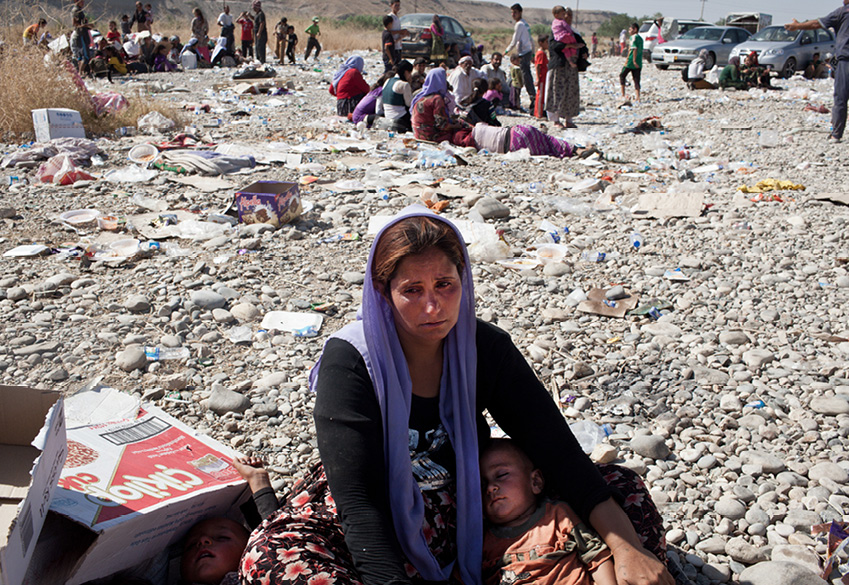
Before the family came to Sweden from an underdeveloped rural village in Syria, they were regularly subjected to fear and violence and forced to flee. Arriving at the Swedish border they had no proof of who they were or where they came from. The authorities estimated Nola to be two and a half, Helan to be three and a half, and their younger brother to be one.
At the time Sweden took a generous stance on asylum seekers, and Nola’s family were given temporary permission to stay. The subsequent process of applying for permanent asylum was very slow. Before it was properly under way, Nola and Helan were already in school. After several years the family’s application for asylum was processed then refused, although they had the right to appeal against the decision, not once but twice. By that time the Syrian war had started, making their birthplace even more dangerous. It was at this point that Nola showed the first signs of withdrawal.
The children had lived in Sweden for longer than they had lived anywhere else. I don’t know what Nola and Helan knew of the place they were born but, even if it was never explicitly discussed, they must have felt the fear associated with returning there.
I looked at Helan. Like Nola and her mother, she had a long mane of thick black hair. She had been sick for only a few months, since the family’s third and final application for asylum had been rejected.
She had been sick for only a few months, since the family’s third and final application for asylum had been rejected.
“When the third rejection letter arrived, Helan said, ‘What will happen to my sister?’ ” Dr Olssen told me. “Then she became quiet and we saw she was getting sick. I told her parents not to let her stay in bed. I told them to make her eat and to keep her in school, but it was impossible.”
The authorities believed that the family was Turkish, Dr Olssen told me. They could not be sent back to war-torn Syria, but if they were Turkish they could be returned there. I couldn’t imagine how it must have felt to a child to be told they would have to leave their home to go to a place that existed only as a horrific story.
Dr Olssen’s husband, Sam, knew the families of the resignation-syndrome children as well as his wife did. He was a kindly white-bearded grandfather, a US citizen by birth and a trained psychologist. The previous evening he had told me how, when granted residency, the children usually woke up, albeit not overnight. It could take months or longer, depending on how long the child had been ill.
Once recovered the children were able to flourish in their new lives. Another child they cared for, a girl called Aliya, had fled from a former Soviet republic as a member of a persecuted minority. She’d suffered from resignation syndrome for more than a year, showing no signs of voluntary activity until the day after she was told she had permanent residency in Sweden, when she opened her eyes for a moment. Over the weeks that followed she awoke fully and, after a few months, she was back at school.
“Did she tell you what it felt like to suffer from resignation syndrome?” I asked.
“She said it was like being in a dream that she didn’t want to wake up from.”
She said it was like being in a dream that she didn’t want to wake up from.
I liked that description. It made the children’s plight less frightening. I had read of one young boy’s experience and it had been much more disturbing: “He had felt as if he were in a glass box with fragile walls, deep in the ocean. If he spoke or moved, he thought, it would create a vibration, which would cause the glass to shatter. ‘The water would pour in and kill me,’ he said.”
Back in the bedroom the girls’ mother sat on the edge of Nola’s bed, using a hairbrush to brush the child’s bare arms and legs. This was their daily routine, a sensory experience. Afterwards she moved Nola’s joints, bending and straightening her knees and elbows, rolling her hips, shoulders and wrists in turn.
The family washed and dressed the girls every day. They tried to create a routine, so the girls would have a sense of morning, afternoon and evening. They changed the girls’ position in bed to protect their skin from ulcers. They sat them in wheelchairs by the dinner table, so they wouldn’t forget they were part of a family, and they placed titbits of food on their tongues in the hope of tempting them to eat. They wet their lips with water. They tried giving each girl a straw to drink from, which Helan could manage, but Nola ignored. As we left their room, both girls lay just as we had found them.

After the first of the refugee children fell ill in Sweden and the test results came back as normal, there were the inevitable accusations that they were pretending to be sick. Yet children as young as seven remained completely unresponsive, even during long-term hospital admissions. No child could sustain such a prolonged apathetic state voluntarily.
A great deal of effort has gone into trying to understand the biomechanics of resignation syndrome. Various incomplete theories have attempted to shed light on the biology of the disorder. Doctors have noted a fast heart rate and high body temperature in some of the children, which suggests that a stress response mediated by hormones or the autonomic nervous system could play a part in the disorder. In the same vein, one group of scientists speculated that stress hormones in pregnancy affected brain development and reduced the children’s ability to cope with stress later in life.
The problem with these observations and theories is that neither stress hormones, the autonomic nervous system, nor poor brain development would account for the unusually sustained and profound physical manifestations of the disorder, nor the strange geographical distribution. There are asylum-seeking families all over the world, but very few have responded to their situation like the children in Sweden. Stress is common, but resignation syndrome is not.
There are asylum-seeking families all over the world, but very few have responded to their situation like the children in Sweden.
The resignation-syndrome children became ill while living in Sweden, but most had experienced trauma in their country of birth. It seems likely, then, that this past trauma would play a significant role in the illness. Perhaps it is a form of post-traumatic stress disorder? Or could the ordeals suffered by the parents have affected their ability to parent, which in turn impacted on the emotional development of the child? One psychodynamically minded theory is that the traumatised mothers are projecting their fatalistic anguish onto their children, in what one doctor described as an act of “lethal mothering”.
As a neurologist, people expect me to be especially interested in the brain mechanisms that cause disability. But, standing in the bedroom shared by Nola and Helan, the confused neural networks keeping these small children in bed seemed the least important part of what created their situation.
Resignation syndrome doesn’t affect all asylum seekers; children from countries of the former Soviet republics and from the Balkans are more likely to suffer from it. Yazidi and Uighur people, ethnic groups that have recently been subject to a great deal of persecution, are also disproportionately affected.
Why do we not see it happening all over the world? And why doesn’t it happen to people of different ages and backgrounds? It seemed obvious to me, having heard the girls’ story, that there was something to learn from the cultural specificity of the disorder.
Why do we not see it happening all over the world? And why doesn’t it happen to people of different ages and backgrounds?
If societal influences lead to this disorder, they do not stem from the country of origin, but rather from some combination of circumstances. The vulnerabilities created by the children’s past experiences were important, surely, but so too was their journey to and their life in Sweden. After all, Nola and Helan had spent the vast majority of their lives there.
Sweden had been welcoming to the family when they arrived. They were granted temporary residency and given a home pending their application for asylum. The process took three years to get started in earnest, at which stage both girls were in school. They spoke fluent Swedish. They had established friendships.
Once under way, the application process was drawn out over several years. Although the family was not on trial, they felt as if they were interrogated rather than listened to. The asylum system seeks to find the mistakes that disprove an applicant’s case, rather than looking for evidence to prove it. The children are usually obliged to be present for the hearings.
Sweden has experienced a rise in anti-immigrant rhetoric since 2014, when greater numbers of foreign nationals arrived in the country. Given that resignation syndrome is considered by many to be caused by hopelessness, and can therefore be treated by the restoration of hope, it is perhaps not far-fetched to conclude that the lengthy asylum process could be a contributing factor to the development of the disorder. Nola and Helan have spent almost their entire lifetimes alternating between anticipation and despondency. That has physical consequences.
The key to understanding resignation syndrome is unlikely to lie inside the head of a child. It is far bigger than that. The children are reacting to a dire situation by unconsciously playing out a sick role that has entered the folklore of their small community.
The children are a small group, but there is much to be learnt from their situation. For too long the role of social environment in the development of illness has been neglected in favour of psychological and biological perspectives. Outbreaks of mass psychosomatic illness happen all over the world, multiple times per year, but they affect such unrelated communities that no one group gets the chance to learn from another.
As I write this, it has been more than a year since I met Nola and Helan. Neither has recovered. Their asylum status has not been approved and they both remain bed-bound. I visited them as a neurologist, but the more I think about them, and the more I have learnt, the less I see their problem as neurological or even medical.
© Suzanne O’Sullivan 2021. Extracted from The Sleeping Beauties: And Other Stories of Mystery Illness by Suzanne O’Sullivan, distributed by Pan Macmillan Australia, available now.
Photo at top: Djeneta, right, has been bedridden and unresponsive for 2.5 years, and her sister Ibadeta for more than six months, with uppgivenhetssyndrom (resignation syndrome), in Horndal, Sweden. (Magnus Wennman, World Press Photo via AP)




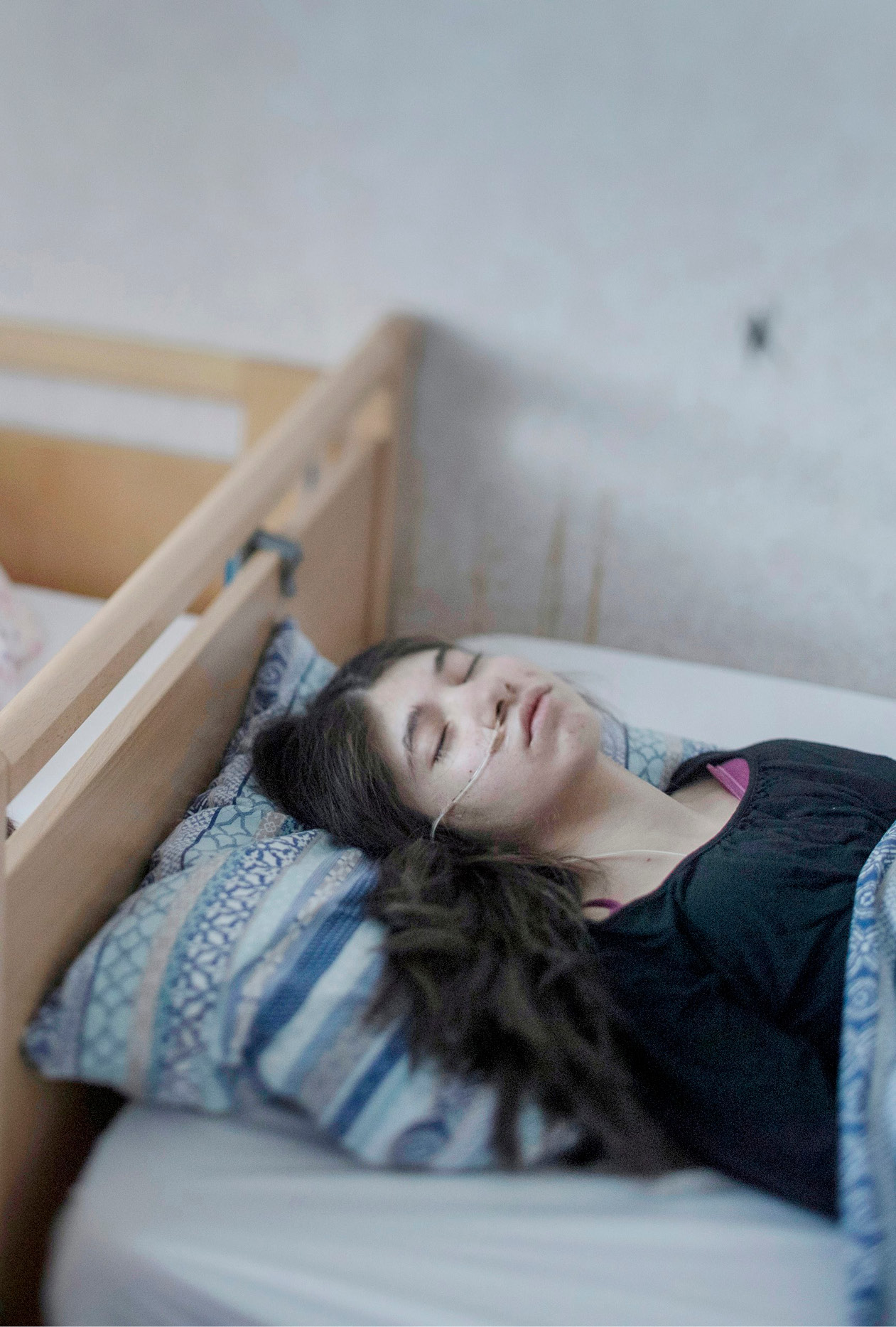
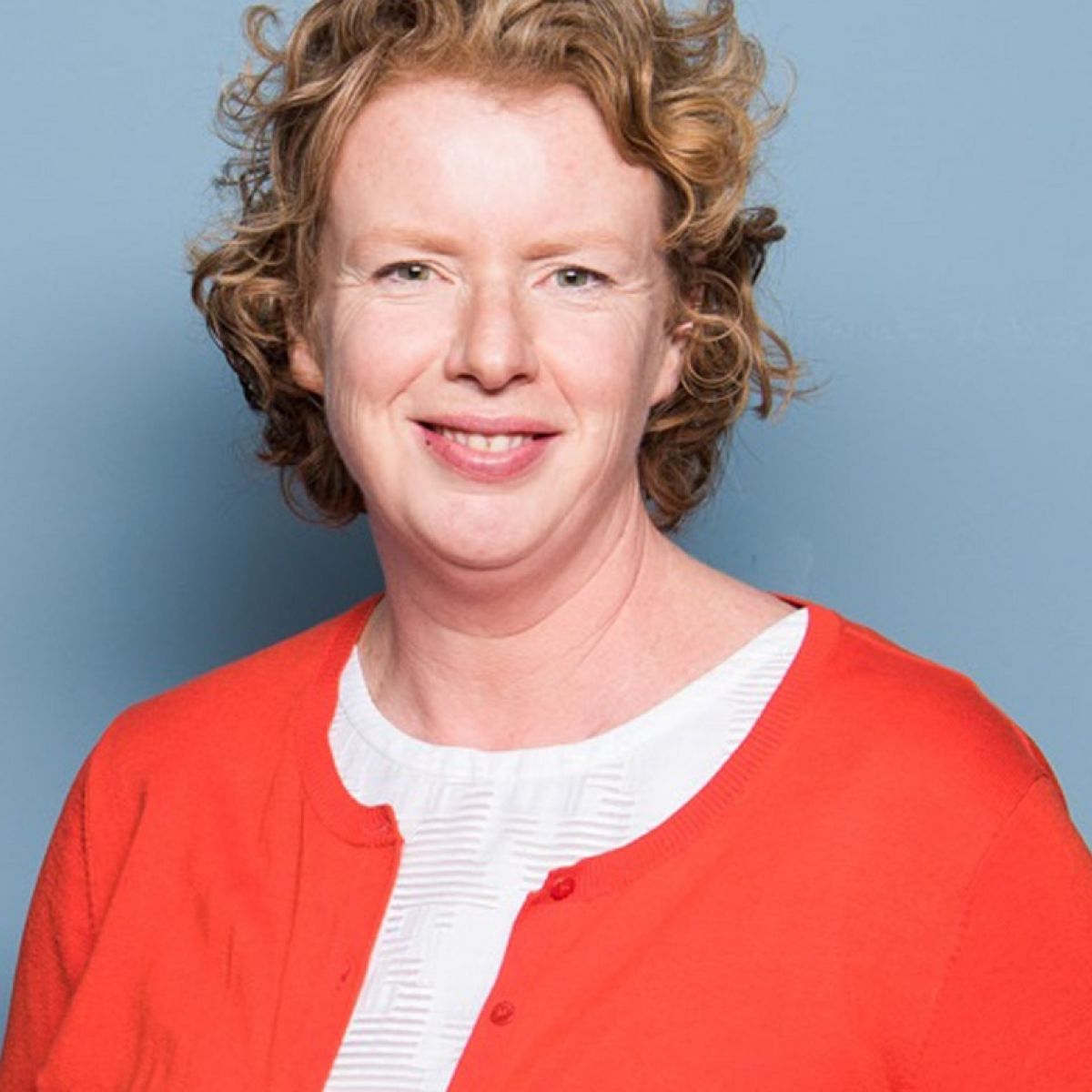

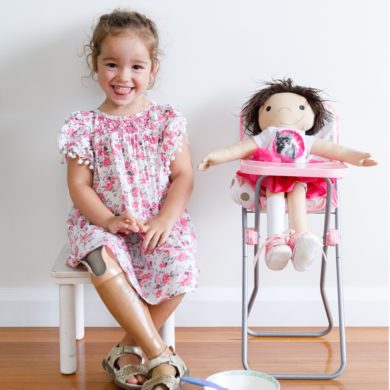

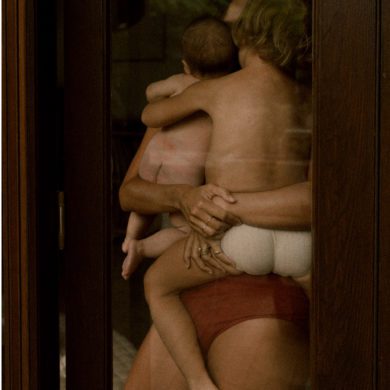

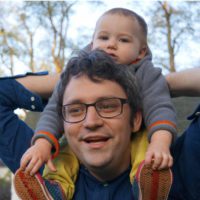

No Comments